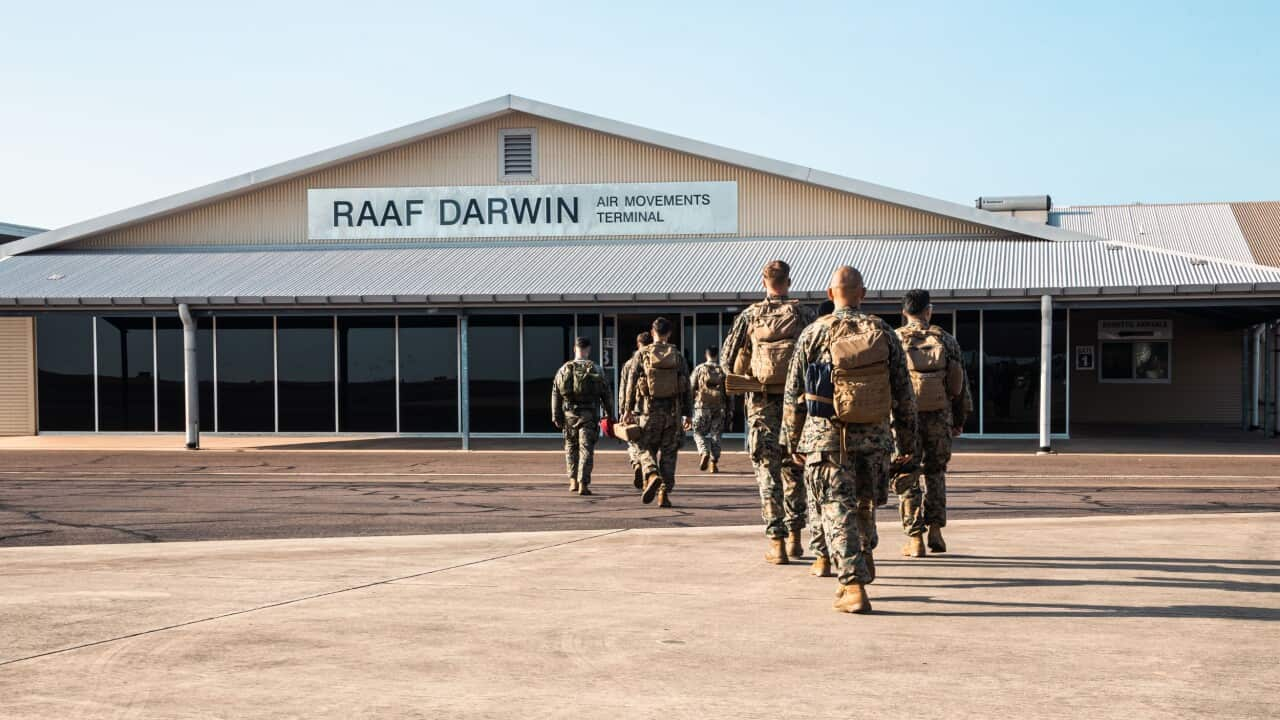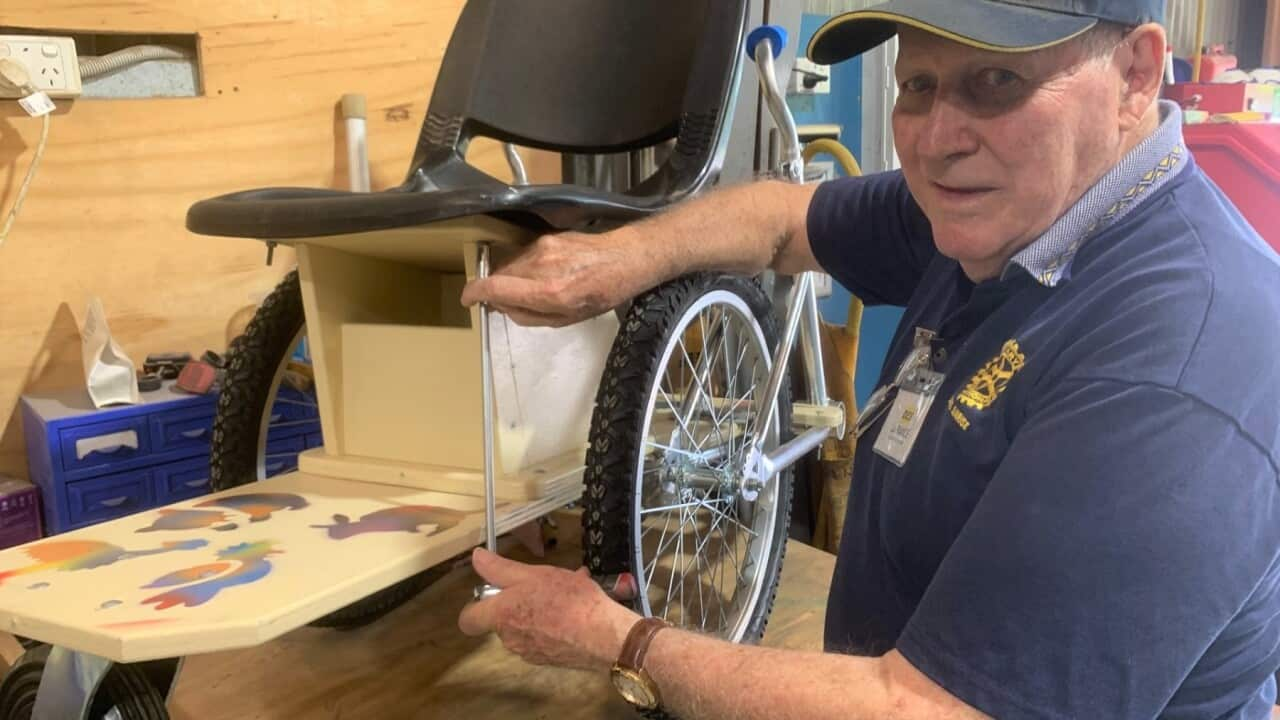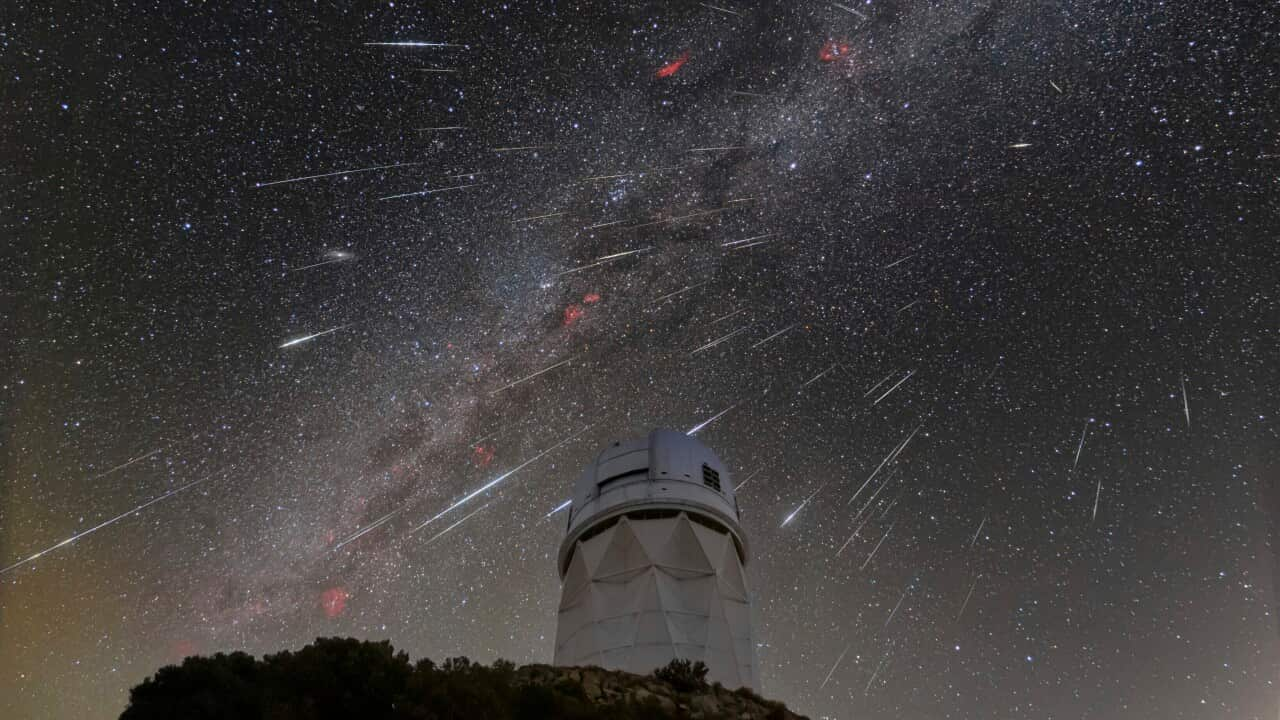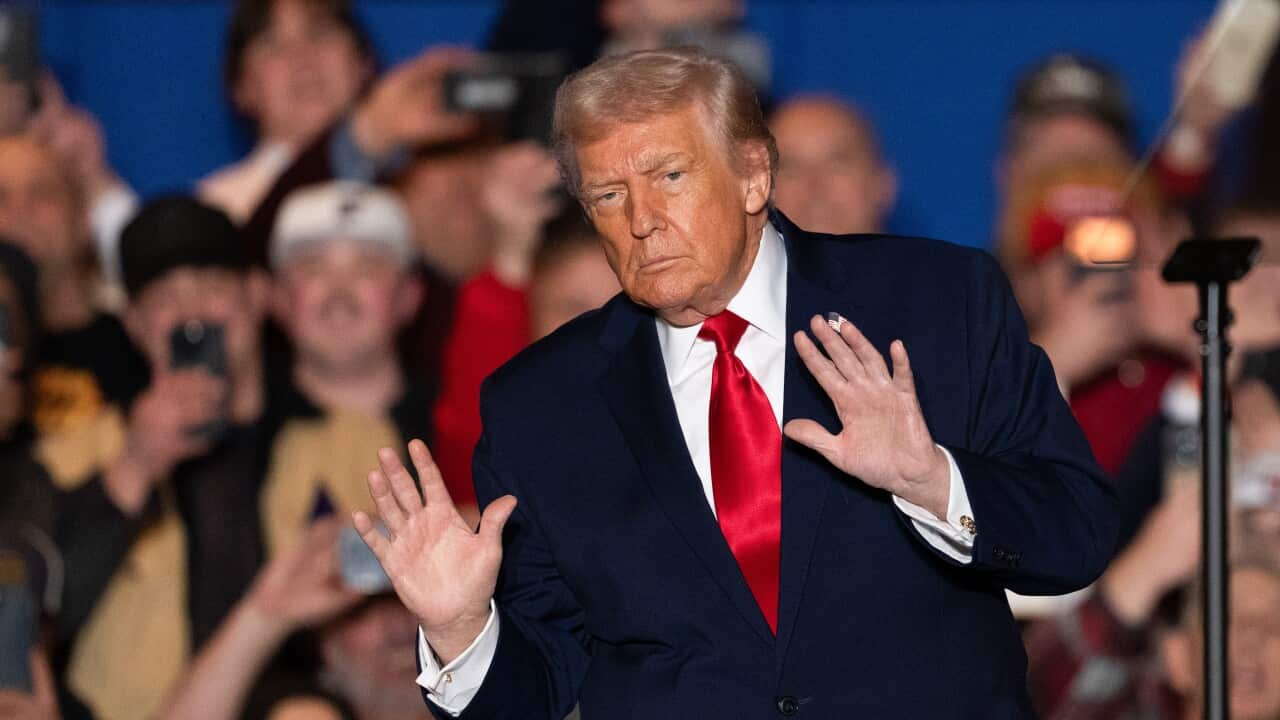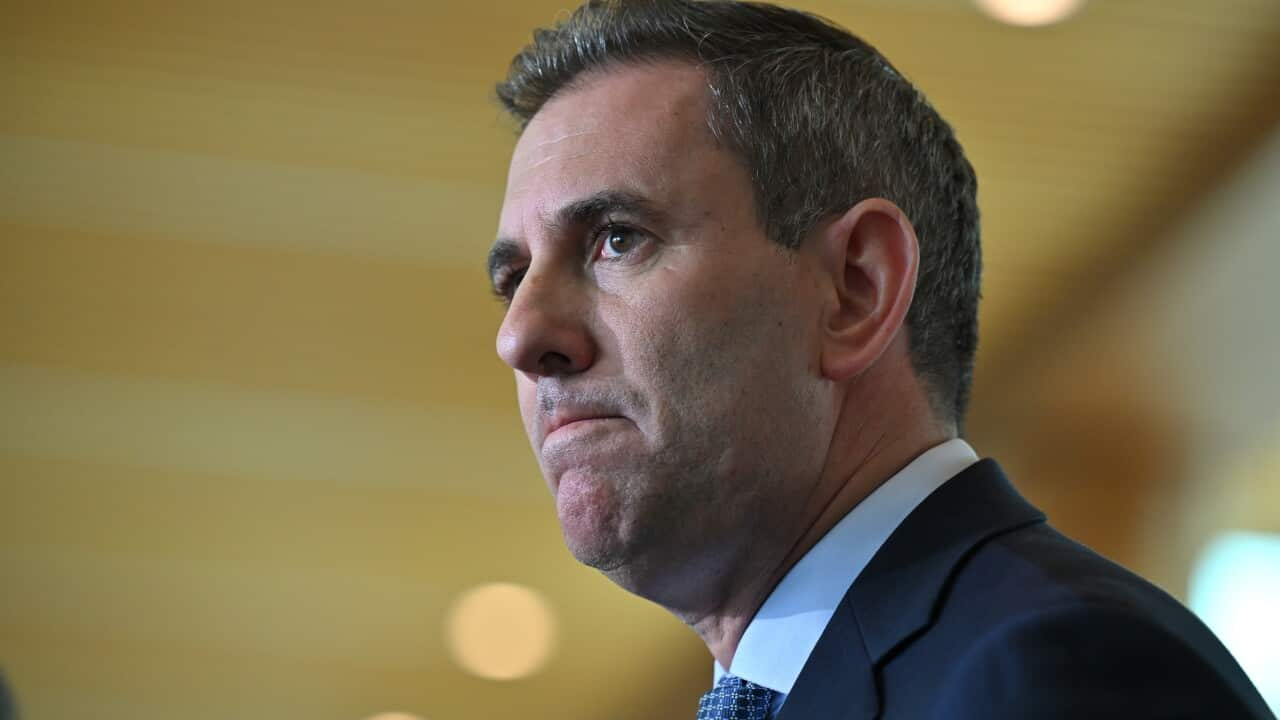(Upsot of gun being loaded on the ground)
At the US Marines base near Darwin, weaponry is maintained like this anti-tank machine system, which can penetrate up to 1.2 metres of steel.
"And after you fire it, every movement you make of the system adjusts how the missile is flying in mid-air."
Since 2012 they have operated from a compound within Robertson Barracks near Darwin.
If troops aren't in the field, they're preparing for when they are.
Colonel Jason Armas is with the marine rotational force in Darwin.
"But this year's rotation was able to do something unique and special. We were able to take that interoperability training that we do here and advance it to all points north. And take it exercises like Balikatan in the Philippines. Exercise Alon in the Philippines. And into Indonesia for Exercise Super Garuda Shield."
Marine Rotational Force Darwin - or MRF-D - has taken part in numerous exercises with Australia - including exercise Balikatan with Filipino forces and Super Garuda Shield in Indonesia - which brought together eight countries including Singapore, Canada and South Korea.
In July, it provided disaster relief to storm damaged communities in the Philippines.
"And really this has been what I would consider an unprecedented rotation for us. But I think the one thing that we took away from it. We talk about the alliance. We talk about the program. MRF-D (Marine Rotational Force - Darwin) is on its 14th iteration. But the reality is we're taking it beyond words. We're driving it into action. And it creates a bond."
US Marine Captain Keyi Li says the exercises are important preparation.
"I got the opportunity to work pretty closely with the Australian airforce at RAAF Darwin just because of the process of getting all our weapons shipped out, all across the world, and that has been a great learning experience for me as well."
There are up to 2,500 US personnel in the Northern Territory.
RAAF Base Tindal south of Darwin is undergoing expansion works that will allow for the staging of six nuclear capable B-52 bombers.
Captain Melissa Neilson is with the ADF Northern Command.
"The MRF-D program I think epitomises the strength of the relationship between Australia and the US. It continues to grow and build. And the fact that we've expanded since the introduction of the MRF-D program back in 2012."
Colonel Armas says Darwin deployments are highly sought after among young marines.
"I was told there is tough, and then there's NT tough and I'll tell you that's a real thing. And the marines and what they take away from working not just the soldiers - but all the members of the Joint Force of the ADF (Australian Defence Force) here in the NT is the grit and resilience - and the toughness of the service members in the ADF. And want them to take that back to the States and incorporate that back in everything they do. Because NT Tough is a very real thing."
For the first time in the rotation's 13 years, Osprey aircraft used by the marines will remain behind for storage and maintenance.
"Giving them the ability to respond more quickly to crises in our region. So rather than having to bring all those aircraft with them - in the case of a crisis. They're already pre-positioned in Northern Australia, which would make that response much quicker - and much more effective than having to do that from scratch. Or having to redeploy from another part of the region. So I think it is definitely noteworthy. But to me it is a natural evolution in the relationship; and the nature of this rotational force."
That's international defence and foreign policy expert David Andrews - a senior policy advisor at the Australian National University's National Security College.
He says US expansion in the Top End is evolving though practical equipment and logistics measures rather than with a major policy shift.
"That's why we've placed such a heavy priority on improving our own defence capabilities, but also strengthening our alliances and partnerships with not just the United States, but with other countries like Japan. We've now seen the treaty alliance with Papua New Guinea that we've signed recently. Indeed, with New Zealand, Singapore, Indonesia - lots of other countries."
There will also be a US military presence in Western Australia known as 'Submarine Rotational Force - West' under AUKUS.
Six bases in the NT are being upgraded including a marksmanship facility near Darwin.
(Sounds at the firing range)
It reopened in October after receiving a 40 million dollar upgrade, funded through joint US-Australia investment.
"God forbid, if we were to be attacked, then you would anticipate that that would come through Australia's what we call our northern approaches. So the marine space to the north of Darwin and north Queensland. So that again makes these parts of Australia critical to our defence. So while of course, more of the population is in the southeast - the critical geography and defence infrastructure is principally in northern Australia."
The federal government says Japan will also deploy soldiers to Darwin soon as part of its military cooperation with the US and Australia.
Assistant Defence Minister Peter Khalil says it is a sign of closer ties between the countries.
"Well, I won't steal any thunder from the DPM (Deputy Prime Minister) or the Prime Minister but there is ongoing conversations with Japan we have been working very closely with Japan. They have been involved in many of the military exercises up north. And they are very important friend and partner."
Japan now one of Australia's most important Asian security partners in the face of tensions from China.
Mr Andrews - at the ANU - says the arrangement highlights how Australia's north is increasingly playing a significant role in regional security.
"Australia has what we call a special strategic partnership with Japan. So they're probably one of our top tranche, if not our most important Asian security partner. So we're not formal allies - like we are with the United States, New Zealand and now Papua New Guinea. But they're really at the highest tier of our relations in the region. And we have seen the decision to acquire the enhanced Mogami frigate from Japan. So those ties will get even closer in the years ahead, I suspect. And this would be in that sense probably a natural evolution of that process."
